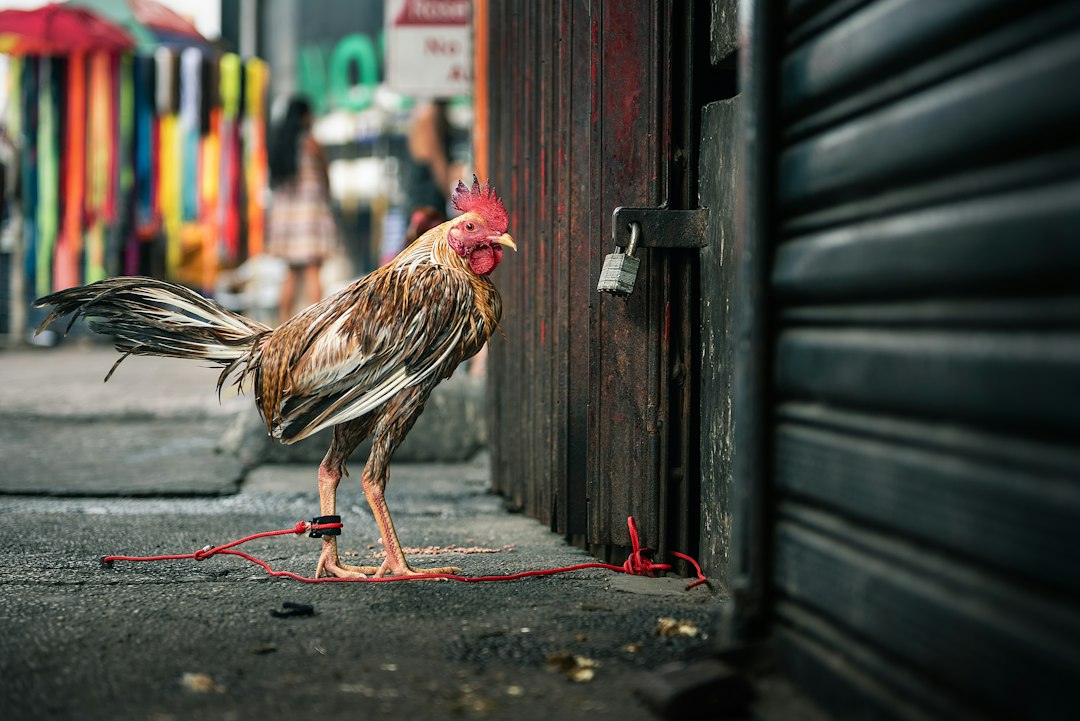The Manananggal is a creature of Philippine folklore that has captivated the imaginations of generations. It is a mythical creature that is said to be a beautiful woman during the day, but at night, it transforms into a terrifying monster with bat-like wings and a long, snake-like tongue. The Manananggal is known for its ability to detach its upper body from its lower half and fly around in search of prey, usually pregnant women or young children. It is believed to have originated from the Visayan region of the Philippines, but its legend has spread throughout the country.
Key Takeaways
- The Manananggal is a creature from Philippine folklore with a long history dating back to pre-colonial times.
- The creature is described as having a human upper body and bat-like wings, with the ability to detach its torso and fly at night.
- The Manananggal is said to have supernatural powers, including the ability to control the weather and shape-shift into different forms.
- The creature feeds on the blood of pregnant women and fetuses, as well as other human organs and flesh.
- The Manananggal hunts its victims by using its sharp claws and teeth to tear them apart, often targeting pregnant women and their unborn children.
- The Manananggal can be defeated by finding and destroying its lower half while it is detached from its upper body.
- The creature has been depicted in various forms of popular culture, including films, literature, and television shows.
- The Manananggal is significant in Philippine culture as a symbol of fear and a reminder of the country’s rich folklore traditions.
- The creature continues to inspire fear and fascination in modern horror, with many contemporary horror films drawing inspiration from its legend.
- Despite its ancient origins, the Manananggal remains relevant in the 21st century as a powerful symbol of Philippine culture and folklore.
The Origins of the Manananggal: A Brief History of Philippine Folklore
The Manananggal has its roots in Philippine mythology and is deeply ingrained in the country’s folklore. It is believed to have originated from the Visayan region, specifically in the provinces of Capiz and Antique. The word “Manananggal” comes from the Filipino word “tanggal,” which means to separate or detach. This refers to the creature’s ability to detach its upper body from its lower half.
Historically, there have been accounts of encounters with the Manananggal dating back centuries. These accounts were often passed down through oral tradition and were used as cautionary tales to warn people about the dangers of wandering alone at night. The Manananggal was said to prey on pregnant women and young children, sucking their blood and eating their internal organs.
The Manananggal’s Physical Appearance: A Glimpse into the Creature’s Features
The Manananggal is described as a beautiful woman during the day, but at night, it transforms into a horrifying monster. It has bat-like wings that allow it to fly, and its lower half is said to resemble that of a snake. Its most distinctive feature is its long, snake-like tongue, which it uses to suck the blood of its victims.
In comparison to other creatures in Philippine folklore, the Manananggal is unique in its ability to detach its upper body from its lower half. This sets it apart from other creatures such as the Tikbalang, which is a half-human, half-horse creature, or the Kapre, which is a giant tree-dwelling creature. The Manananggal’s ability to fly and its preference for preying on pregnant women and young children also make it stand out among other creatures in Philippine folklore.
The Manananggal’s Abilities: A Closer Look at the Creature’s Powers
| Ability | Description |
|---|---|
| Flight | The Manananggal can separate its upper body from its lower body and grow wings to fly. |
| Super Strength | The Manananggal possesses incredible strength, allowing it to easily overpower humans. |
| Regeneration | The Manananggal can regenerate lost limbs and heal from injuries at an accelerated rate. |
| Shape-Shifting | The Manananggal can change its appearance to blend in with its surroundings or to lure in prey. |
| Teleportation | The Manananggal can disappear and reappear in a different location, making it difficult to track. |
| Enhanced Senses | The Manananggal has heightened senses, including night vision and the ability to detect prey from a distance. |
The Manananggal is believed to possess supernatural abilities that make it a formidable creature. Its most notable ability is its power to detach its upper body from its lower half and fly around in search of prey. This allows it to easily access hard-to-reach places and surprise its victims.
In addition to its flying ability, the Manananggal is said to have enhanced senses, particularly its sense of smell. It can detect the scent of blood from miles away, making it an efficient hunter. It is also believed to have superhuman strength, allowing it to overpower its victims with ease.
Despite its formidable powers, the Manananggal does have weaknesses. It is vulnerable during the day when it reverts back to its human form. During this time, it can be killed or captured before it has a chance to transform into its monstrous form. Additionally, the Manananggal is said to be repelled by garlic and salt, which can be used as a means of protection against the creature.
The Manananggal’s Diet: What Does the Creature Feed On?
The Manananggal is known for its preference for pregnant women and young children as prey. It is said to suck their blood and eat their internal organs. This diet is believed to be driven by the creature’s desire for vitality and life force, which it believes it can obtain from its victims.
In comparison to other creatures in Philippine folklore, the Manananggal’s diet is unique. While other creatures may also feed on human flesh or blood, the Manananggal specifically targets pregnant women and young children. This makes it a particularly feared creature, as it preys on the most vulnerable members of society.
The Manananggal’s Mode of Attack: How Does the Creature Hunt Its Victims?

The Manananggal is a cunning and stealthy creature that uses various tactics to hunt its victims. It is known to stalk its prey from a distance, observing their routines and habits. Once it has identified a suitable target, it waits for the cover of darkness to strike.
When the time is right, the Manananggal detaches its upper body from its lower half and flies silently through the night. It uses its enhanced senses to track down its prey, relying on its sense of smell to locate potential victims. Once it has found its target, it swoops down silently and attacks, using its long tongue to suck the blood of its victims.
The Manananggal’s Weaknesses: Can the Creature Be Defeated?
Despite its supernatural abilities, the Manananggal does have weaknesses that can be exploited. One of its vulnerabilities is its dependence on its lower half. If its lower half is destroyed or captured during the day when it reverts back to its human form, the Manananggal can be killed or incapacitated.
The Manananggal is also said to be repelled by garlic and salt. These substances are believed to have protective properties against supernatural creatures in Philippine folklore, including the Manananggal. By surrounding themselves with garlic or salt, individuals can create a barrier that prevents the creature from approaching.
The Manananggal in Popular Culture: A Review of the Creature’s Depictions in Film and Literature
The Manananggal has been a popular subject in Philippine literature and film for many years. It has been featured in numerous horror movies, often as the main antagonist. These films have helped to popularize the creature and bring it to a wider audience.
In literature, the Manananggal has been the subject of various short stories and novels. These stories often explore the creature’s origins and motivations, as well as its impact on the lives of those who encounter it. The Manananggal’s ability to transform from a beautiful woman into a terrifying monster has made it a compelling character in horror fiction.
The Manananggal’s Significance in Philippine Culture: Why Is the Creature So Important?
The Manananggal holds a significant place in Philippine culture and folklore. It is deeply rooted in the country’s mythology and is often used as a cautionary tale to warn people about the dangers of wandering alone at night. The creature’s ability to transform from a beautiful woman into a terrifying monster represents the duality of human nature and serves as a reminder that appearances can be deceiving.
The Manananggal also serves as a symbol of fear and vulnerability. Its preference for preying on pregnant women and young children taps into society’s fears for the safety of its most vulnerable members. The creature’s ability to detach its upper body from its lower half represents the fear of losing control or being separated from one’s own body.
The Manananggal’s Influence on Modern Horror: How the Creature Continues to Inspire Fear
The Manananggal has had a significant influence on modern horror, both in the Philippines and beyond. Its unique physical appearance and abilities have made it a popular subject for horror movies, books, and other forms of media. The creature’s ability to transform from a beautiful woman into a terrifying monster taps into universal fears of deception and loss of control.
The Manananggal’s influence can be seen in various horror films that feature similar creatures with detachable body parts or the ability to transform into monstrous forms. Its portrayal in popular culture has helped to keep the creature alive in the imaginations of people around the world.
The Manananggal in the 21st Century: Is the Creature Still Relevant Today?
Despite being a creature of Philippine folklore, the Manananggal continues to be relevant in modern times. Its legend has been passed down through generations and is still widely known and feared today. The creature’s ability to tap into universal fears and anxieties, such as the fear of deception and vulnerability, ensures its continued presence in Philippine culture and folklore.
The Manananggal’s relevance can also be seen in its continued portrayal in popular culture. It continues to be featured in horror movies, books, and other forms of media, both in the Philippines and internationally. This ongoing representation ensures that the creature remains a part of contemporary horror and continues to inspire fear in audiences.
The Manananggal is a creature of Philippine folklore that has captivated the imaginations of generations. Its unique physical appearance, abilities, and diet make it a formidable and terrifying creature. Despite its supernatural powers, the Manananggal does have weaknesses that can be exploited.
The Manananggal’s significance in Philippine culture and folklore cannot be overstated. It serves as a cautionary tale and a symbol of fear and vulnerability. Its influence on modern horror is evident in its continued portrayal in popular culture.
In conclusion, the Manananggal is a creature that continues to inspire fear and fascination in people around the world. Its legend has endured for centuries and remains an important part of Philippine folklore and culture. Whether it is through its physical appearance, abilities, or cultural significance, the Manananggal will continue to be a creature that captures the imagination for generations to come.
FAQs
What is a Manananggal?
Manananggal is a mythical creature in Philippine folklore. It is a female monster that can separate its upper body from its lower body and fly using bat-like wings.
What does the word “Manananggal” mean?
The word “Manananggal” comes from the Tagalog word “tanggal,” which means “to remove” or “to separate.” “Mana” is a prefix that denotes femininity.
What does a Manananggal look like?
A Manananggal is usually depicted as a beautiful woman during the day, but at night, it transforms into a monster with bat-like wings, sharp teeth, and long claws. It can separate its upper body from its lower body, leaving its entrails hanging.
What is the origin of the Manananggal?
The origin of the Manananggal is unclear, but it is believed to have originated from the Visayan region of the Philippines. It is said to be a product of the country’s rich folklore and superstitions.
What is the Manananggal’s behavior?
The Manananggal is known to prey on pregnant women and their fetuses. It uses its long tongue to suck the blood of its victims. It is also believed to be afraid of garlic, salt, and the light of the sun.
Is the Manananggal real?
The Manananggal is a mythical creature and is not real. It is a product of Philippine folklore and superstitions. However, the legend of the Manananggal is still popular in the Philippines and is often used in movies, TV shows, and other forms of media.







